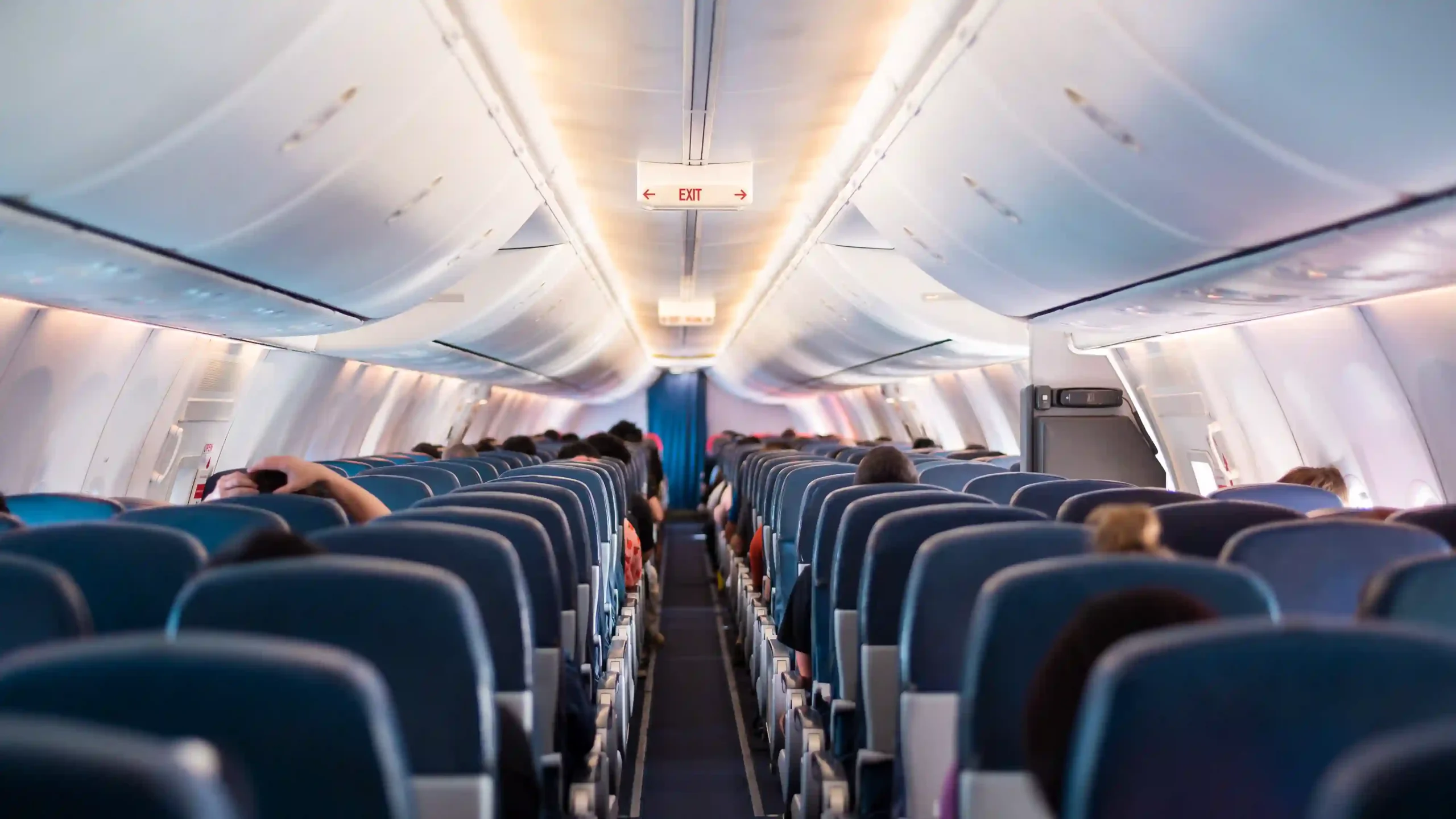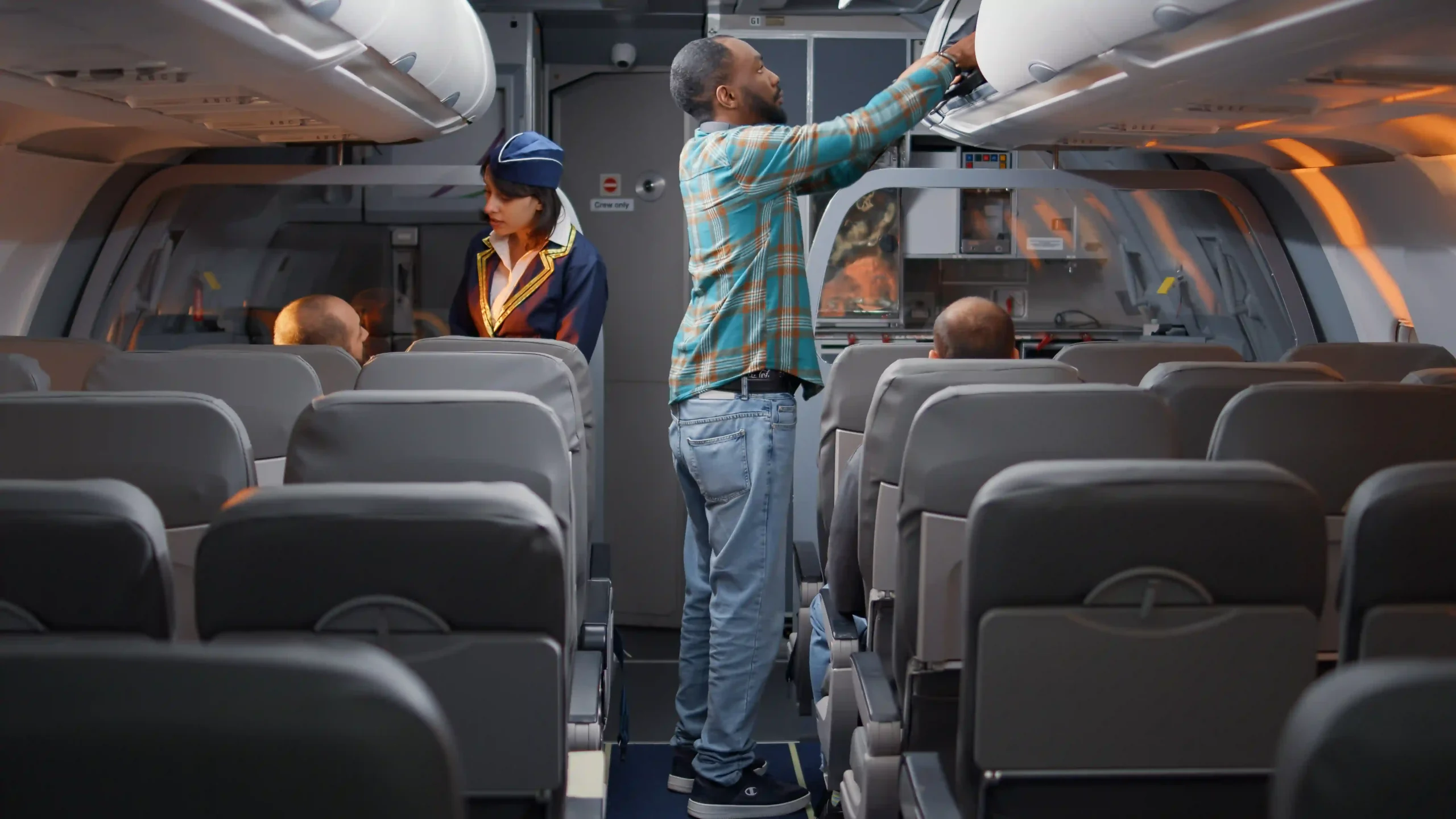The airline industry today refers to the global network of passenger and cargo flights, operated by both commercial and private airlines. It includes everything from major international carriers like Delta and Emirates to low-cost airlines like Southwest and Ryanair.
This industry plays a critical role in global trade, tourism, and economic growth. As the president of a third-party logistics and foreign trade zone company, I have seen firsthand how the airline industry affects the supply chain.
Delays in air cargo, fluctuating fuel costs, and shifting consumer preferences all have a direct impact on businesses that rely on global trade. In 2025, airlines must adapt quickly to changing economic conditions, new regulations, and evolving passenger expectations.

One of the most pressing challenges in the airline industry today is supply chain constraints. Many airlines struggle to acquire new aircraft due to production delays at Boeing and Airbus.
A recent fire at SPS Technologies, a key aircraft fastener supplier, has further impacted Boeing’s manufacturing timeline. As a result, airlines are forced to extend the lifespan of older aircraft, leading to higher maintenance costs and potential safety concerns.
Fuel prices and economic uncertainty continue to be a major issue. Jet fuel makes up about 30% of an airline’s operational costs, and fluctuating prices make it difficult for airlines to set long-term ticket prices.
Some airlines hedge their fuel costs by purchasing fuel in advance at fixed rates, but this strategy isn’t foolproof. In addition, inflation and currency fluctuations impact the profitability of airlines operating in multiple countries.
The labor shortage in the aviation industry is another ongoing concern. Many airlines laid off employees during the pandemic and are now struggling to rehire skilled pilots, flight attendants, and ground staff.
In the U.S., airlines are offering higher salaries and incentives to attract workers, but the pilot shortage is expected to continue for several years. Air traffic controllers are also in short supply, leading to increased flight delays and cancellations.
Finally, competition between budget and full-service airlines is changing the way people travel. Budget airlines offer low fares with minimal services, while full-service airlines differentiate themselves with premium experiences.
Many legacy carriers, including United and American Airlines, now offer basic economy fares to compete with low-cost competitors. However, rising operational costs are putting pressure on budget airlines, making it harder for them to maintain ultra-low fares.
Technology is at the core of the airline industry today, with AI, automation, and biometrics reshaping the passenger experience. Airlines are investing in AI-powered chatbots, predictive maintenance, and real-time flight optimization software.
AI helps airlines reduce delays, optimize fuel consumption, and improve customer service. Biometric technology is revolutionizing airport security and boarding processes.
Many airports now use facial recognition software for seamless check-in and boarding. This eliminates the need for physical boarding passes, reducing wait times and enhancing security.
Airlines are also adopting contactless payment systems and mobile boarding passes, making travel more efficient and hygienic. Blockchain technology is being used to secure passenger data, reduce ticket fraud, and improve baggage tracking.
By enabling decentralized data sharing, blockchain helps airlines streamline operations and enhance security. Some airlines are even using blockchain-based loyalty programs, allowing passengers to earn and redeem miles more efficiently.
In airports, robotics and automation are improving efficiency. Airlines are using robotic baggage handlers, self-service kiosks, and AI-driven scheduling systems to reduce labor costs and speed up operations.
Drones are also being used for aircraft maintenance inspections, helping airlines detect issues before they become safety risks. The Internet of Things (IoT) is enhancing passenger comfort and operational efficiency.
IoT sensors monitor cabin temperature, seat adjustments, and in-flight entertainment preferences. Airlines use this data to create personalized travel experiences, such as adjusting lighting and temperature based on passenger preferences.
The airline industry today is under increasing pressure to reduce its carbon footprint. The aviation sector accounts for about 2.5% of global CO₂ emissions, and airlines are being pushed to adopt greener practices.
Sustainable Aviation Fuel (SAF) is one of the biggest innovations in reducing airline emissions. SAF is made from renewable sources like algae, waste oils, and agricultural residues, and it produces up to 80% fewer carbon emissions than traditional jet fuel.
Many airlines, including United and Lufthansa, are investing in SAF to meet their net-zero emissions goals by 2050. New aircraft designs are also helping reduce fuel consumption and emissions.
Boeing and Airbus are developing lighter, more aerodynamic aircraft with efficient wing designs and hybrid-electric propulsion systems. Some airlines are experimenting with hydrogen-powered aircraft, which could eliminate CO₂ emissions entirely.
Airports are also becoming more sustainable by investing in solar power, electric ground vehicles, and energy-efficient terminals. Many airports now have green taxiing systems, which allow aircraft to move around the airport without using jet engines, significantly reducing fuel waste.
Additionally, many airlines have launched carbon offset programs, allowing passengers to compensate for their flight emissions by investing in reforestation projects or renewable energy initiatives. Read more here.

Looking ahead, the airline industry today is set to undergo significant transformations. One of the biggest trends is the rise of urban air mobility (UAM). Companies like Joby Aviation and Archer are developing electric air taxis, which could revolutionize short-distance travel.
These aircraft are expected to reduce congestion in major cities by offering a fast and eco-friendly alternative to traditional ground transportation. Airlines are also testing ultra-long-haul flights with non-stop routes that last 20+ hours.
Qantas’ “Project Sunrise” flights aim to connect cities like Sydney and London without layovers, using aircraft with enhanced fuel efficiency and passenger comfort. Artificial intelligence will continue to play a major role in the airline industry.
AI-powered dynamic pricing models will allow airlines to adjust ticket prices in real-time based on demand. AI will also enhance flight safety and air traffic control operations, reducing the risk of human error.
Mergers and alliances are expected to reshape the competitive landscape. Many airlines are forming strategic partnerships to expand their route networks and cut costs.
Budget airlines may face further consolidation, as operational costs continue to rise. Finally, the subscription-based travel model is gaining traction.
Airlines like Alaska Airlines are testing monthly flight subscription services, allowing frequent travelers to pay a fixed fee for unlimited flights. This model could reshape airline loyalty programs and provide passengers with more flexible and affordable travel options. Read more here.
As the president of a third-party logistics (3PL) and Foreign Trade Zone (FTZ) company, I have seen how changes in the airline industry today directly affect supply chain operations. When air cargo is disrupted, global trade faces delays, cost increases, and logistical headaches.
One of the biggest challenges for logistics providers like Tri-Link FTZ is capacity constraints in air freight. Airlines prioritize passenger flights over cargo space, meaning businesses that depend on air transport often struggle with available space for shipping.
This issue became even more pronounced during the pandemic and continues as airlines rebalance their operations. Foreign Trade Zones (FTZs) provide solutions for businesses dealing with air cargo delays and customs challenges.
At Tri-Link FTZ, we help companies manage imported goods efficiently, allowing them to store products duty-free until they are ready for distribution. With airlines facing unpredictable schedules, having a strategic FTZ partner ensures flexibility in shipping and inventory management.
Rising fuel costs and supply chain inefficiencies also impact logistics pricing. Airlines pass on fuel surcharges to freight customers, making air cargo more expensive.
Many businesses are shifting to multi-modal transportation—combining air, ocean, and ground shipping—to reduce costs and improve reliability. As a logistics expert, I always advise clients to diversify their transportation strategies to avoid reliance on a single mode of transit.
Another major shift in the airline industry today is the integration of AI and automation in cargo handling. Airlines are using smart tracking systems, AI-driven forecasting, and automated warehousing solutions to speed up cargo processing and reduce errors.
At Tri-Link FTZ, we leverage real-time tracking and smart warehousing to ensure seamless inventory management for our clients.
As we look toward the future, the airline industry today is on the brink of major innovations that will reshape global logistics and passenger travel. Several key developments will define the next decade of aviation.
Artificial Intelligence is playing an even bigger role in scheduling, predictive maintenance, and real-time logistics. Airlines are investing in AI-powered dynamic pricing, automated flight scheduling, and predictive analytics to improve efficiency and profitability.
For logistics companies like Tri-Link FTZ, this means faster processing times, more accurate shipment tracking, and better forecasting for supply chain needs. Businesses that integrate AI-powered logistics software will have a competitive advantage in this evolving landscape.
Sustainability is no longer optional for airlines. With governments enforcing stricter carbon regulations, airlines are expanding their investment in Sustainable Aviation Fuel (SAF).
For shippers, this could mean higher freight rates as airlines pass on the cost of cleaner fuel alternatives. However, companies that prioritize sustainability in their supply chain will benefit from eco-friendly incentives and long-term cost savings.
Airlines are investing in fuel-efficient, long-haul aircraft that will expand international trade routes. Non-stop flights between global economic hubs will reduce transit times for high-value cargo shipments.
As global trade hubs grow, Foreign Trade Zones (FTZs) will become even more essential. Businesses will rely on FTZs for duty-free storage, flexible distribution, and strategic location advantages.
At Tri-Link FTZ, we’re prepared for this shift by expanding our services for global trade clients.
The future of aviation isn’t just about commercial airlines—it’s also about urban air mobility (UAM). Companies like Joby Aviation and Archer are developing electric air taxis, which will change short-distance travel in major cities.
This shift may also impact regional logistics, with air cargo drones being tested for last-mile delivery solutions. At Tri-Link FTZ, we are closely monitoring these trends, as they could offer new ways to optimize supply chain efficiency.
The post-pandemic airline industry is seeing major consolidations and alliances. Large carriers are merging or forming strategic partnerships to expand their networks and reduce costs.
For logistics providers and FTZs, these mergers could change airline freight agreements and impact air cargo pricing. Companies that stay ahead of these changes—by partnering with multiple carriers and diversifying their supply chain strategies—will remain resilient.

The airline industry today is evolving faster than ever, with technology, sustainability, and economic factors driving major shifts. Airlines face challenges, but they are also innovating in ways that improve efficiency and the passenger experience.
As a leader in third-party logistics and foreign trade zones, I see firsthand how these airline trends impact global trade and supply chains. At Tri-Link FTZ, we help businesses navigate air cargo challenges, optimize shipping costs, and stay ahead of aviation industry trends.
To succeed in this rapidly changing environment, businesses must adapt, invest in technology, and leverage strategic logistics partnerships. Whether you’re a manufacturer relying on air freight, a retailer importing goods, or a distributor managing inventory across multiple regions, understanding the airline industry today is crucial for success.
At Tri-Link FTZ, we are committed to providing innovative logistics solutions that align with the future of global trade. If your business needs efficient supply chain strategies, duty-free storage, or expert logistics support, reach out to us—we’re here to help you navigate the complexities of the modern airline industry.
Share this article
We have other resources available upon request as well as one-on-one support and personalized answers, just like our services.
Simply contact us anytime and we’ll get back to you to answer your questions and provide meaningful answers that show you how Tri-Link supports your logistics, reduces costs, and accelerates efficiency.
Tri-Link delivers exceptional FTZ and 3PL services tailored to your global trade needs.
Our solutions combine innovation, quality, and efficiency to exceed your expectations and meet your specific requirements.